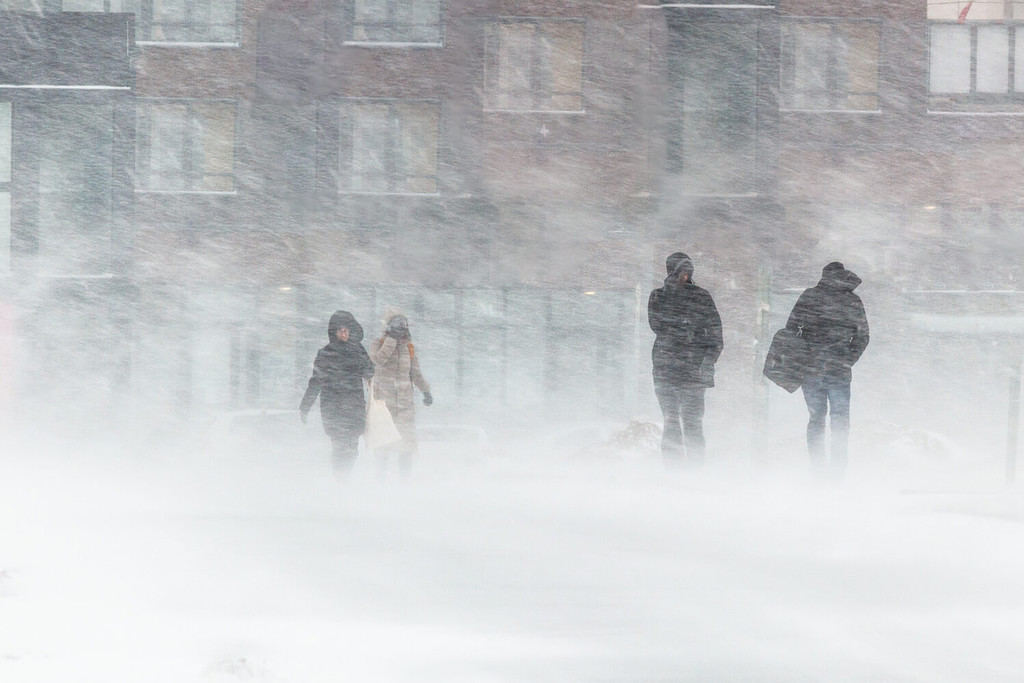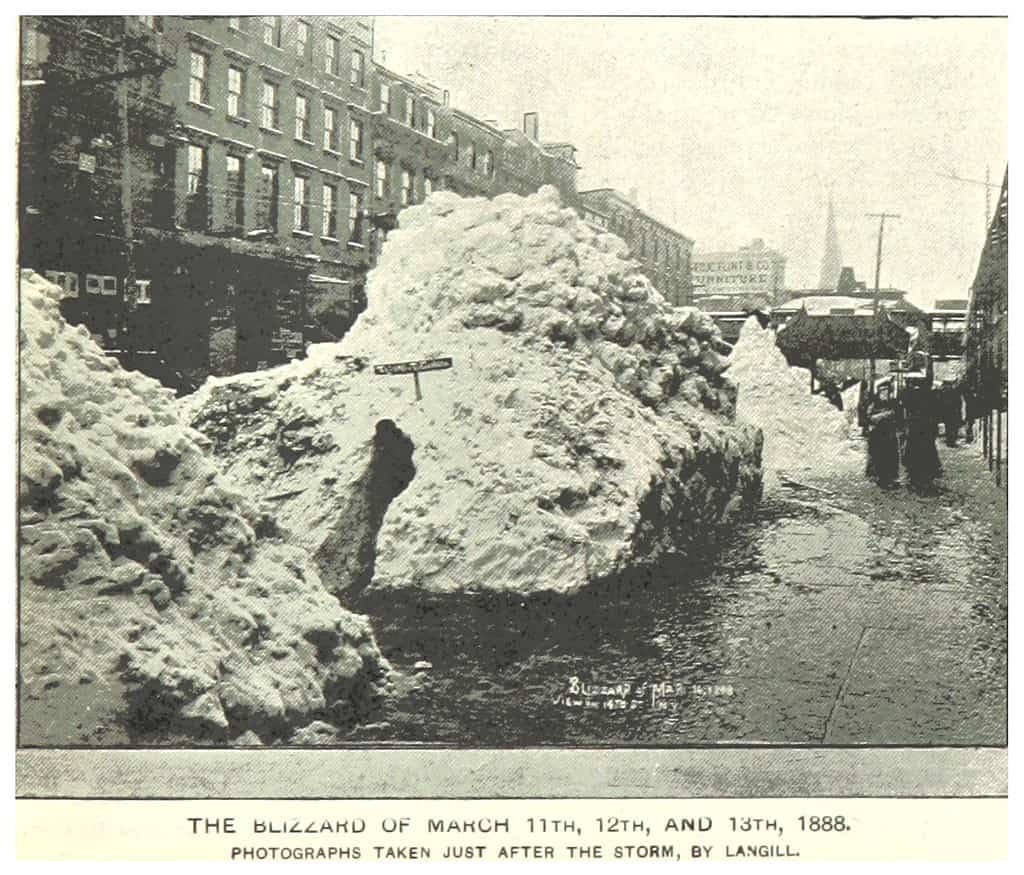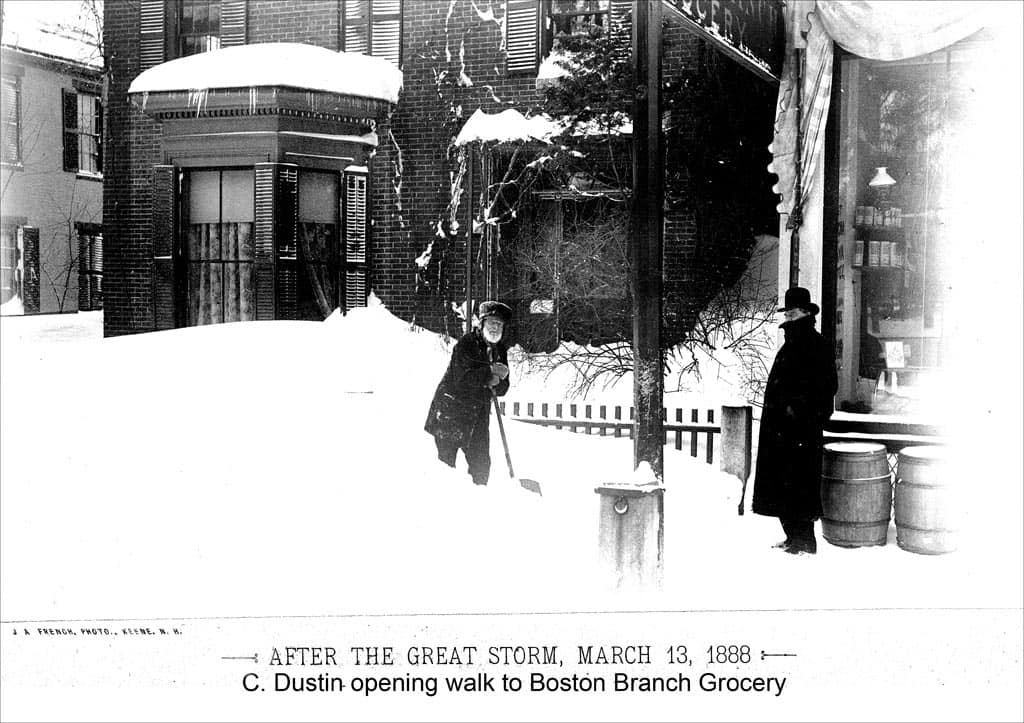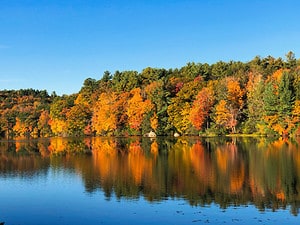The turkey day blizzard of 1971 took millions by surprise. It occurred nearly a month before the start of winter and is still a Thanksgiving snowstorm for the record books in upstate New York state and adjacent locales.
Snow started falling on November 24, the day before Thanksgiving, and the flakes were still flying the next day. Albany, a city that’s no stranger to snow, got a whopping 22.5 inches. The National Weather Service still ranks the 1971 blizzard as the greatest November snowstorm on record for the Albany area.
But New York’s capital city wasn’t the only place that got taken by surprise. Read on to learn about the biggest Thanksgiving blizzard to slam New York State.
A Thanksgiving Snowstorm to Remember
The unexpected nor’easter, which grew in intensity as it moved from the Mid-Atlantic into New England, brought Thanksgiving 1971 to a standstill for millions. Typical recollections are those of a Connecticut family returning from North Carolina with a frozen turkey in their car, who had to stay in a motel in Danbury, just over the New York state line, after being unable to make the last few miles of the trip home.

The 1971 Thanksgiving snowstorm took millions by surprise.
©justkgoomm/Shutterstock.com
Nor’easters can produce devastating weather, such as the legendary blizzard of 1888. (More on that in a minute). These types of storms always result in heavy precipitation and gale-strength winds.
The ’71 storm not only broke records in Albany but buried nearby locations at higher elevations under nearly 30 inches of snow. New York’s Catskill Mountains and Upper Hudson Valley were among the other locales that got a very white Thanksgiving that year. The high moisture content of the snow made it especially heavy, snapping utility poles and causing local blackouts.
It was a Thanksgiving snowstorm to remember!
The Busiest Travel Time of the Year
Nearby Pennsylvania didn’t fare much better, with Scranton surprised by two feet of snow and much higher drifts. More than a half-century later, older folks in Cumberland County, Pennsylvania, can still recall how it collapsed buildings, took down power lines, and snuffed out phone service at a time before cell phones. The forecast for that area had only called for one to two inches. Instead, locals spent Thanksgiving shoveling up to 23 inches of snow from their driveways.
The unfortunate timing of the storm, during the busiest travel period of the year, also left untold numbers of passengers stranded in airports. In some hard-hit areas, residents were without power for days.
But all the turmoil and trouble this storm caused pales in comparison to the chaos caused by the “granddaddy” of all nor’easters.
A Blizzard for the Record Books

New York City endured a monster blizzard in 1888.
©Public domain / via Wikimedia Commons – License
Big events are not forgotten with the passage of time. Such is the case with the blizzard of 1888. Snow fell without stopping from March 11-14, just before the arrival of spring.
That meteorological monster killed 400 people and paralyzed the East Coast for weeks. Two hundred people died in New York City alone, most buried in the snow as they tried to walk home. Dozens of trains became stranded in New Jersey, Connecticut, and Long Island, adding to the body count when passengers attempted to leave them.
One of the more enduring tales from the great blizzard is of Princeton University students helping to free stranded passengers from a train stuck in a snowdrift. These unfortunate travelers, including many children, were trapped, cold, and hungry for two days.
But while some people engaged in acts of heroism, others saw an opportunity for profit. Stories are also told of local farmers selling stuck and starving people a slice of bread and ham for as much as $1.50. (Remember, this was 1888!)
The event also produced gale-force winds that resulted in the loss of several ships off the coast. Some floundered due to heavy ice accumulating topside.
The ‘Great White Hurricane’
The snow tallies from the “Great White Hurricane,” as it was then called, were beyond belief. Albany measured over twice as much snow as the 1971 Thanksgiving storm coming in at 47 inches. One town to the south, in Dutchess County, New York, reported drifts up to 40 feet high.

Shoveling snow after the ‘great storm’ of March 1888 in Keene, New Hampshire.
©Keene Public Library / Public Domain – License
But nothing topped what fell in Saratoga Springs, New York. Measuring 58 inches, the snow stopped all communications via telegraph and telephone. It left people trapped in their homes (if they were lucky) for weeks with no idea of the duration or magnitude of the storm.
And once the snow stopped falling, clearing it was no easy task, especially with the tools available 135 years ago.
The usual method those days after a snowstorm was for a team of strong horses to pull big wooden boards to pack down the snow. But that only worked until the drifts became too high for the horses to navigate. In Saratoga Springs, tunnels were dug through the drifts so people could traverse the sidewalks.
At least no one needed to tunnel their way home for Thanksgiving in 1971!
Thank you for reading! Have some feedback for us? Contact the AZ Animals editorial team.








